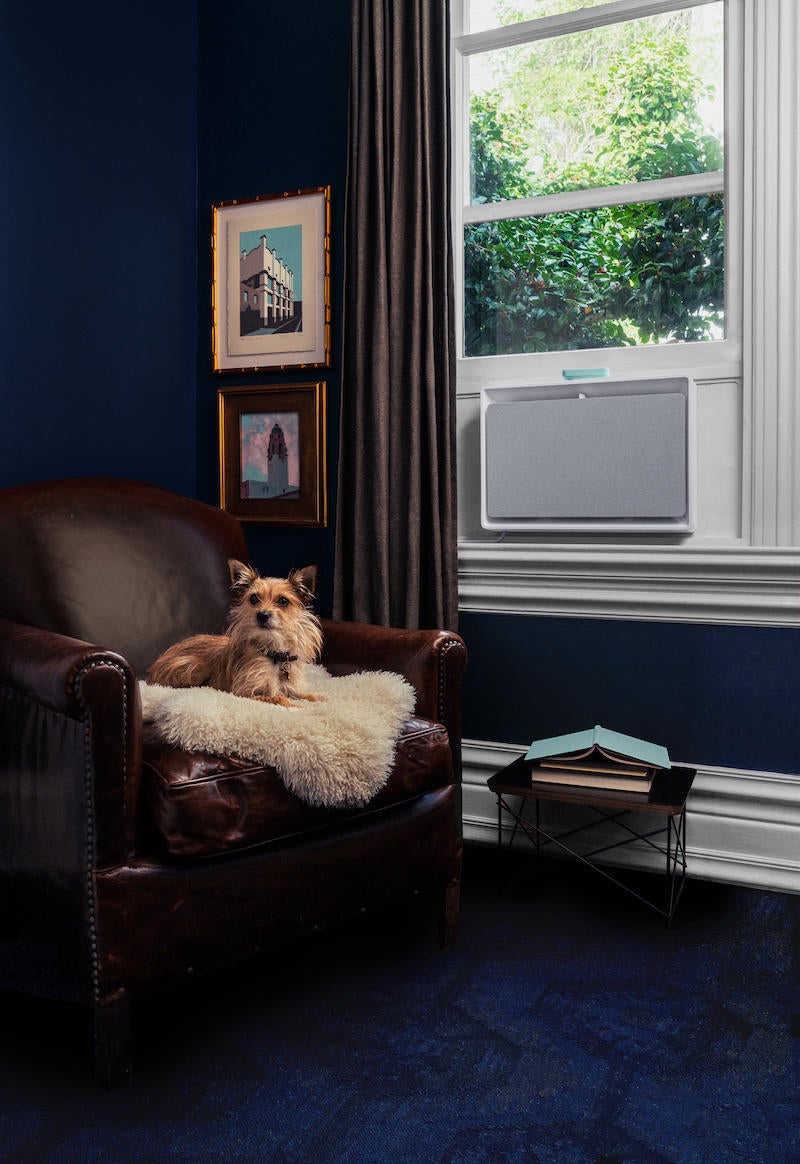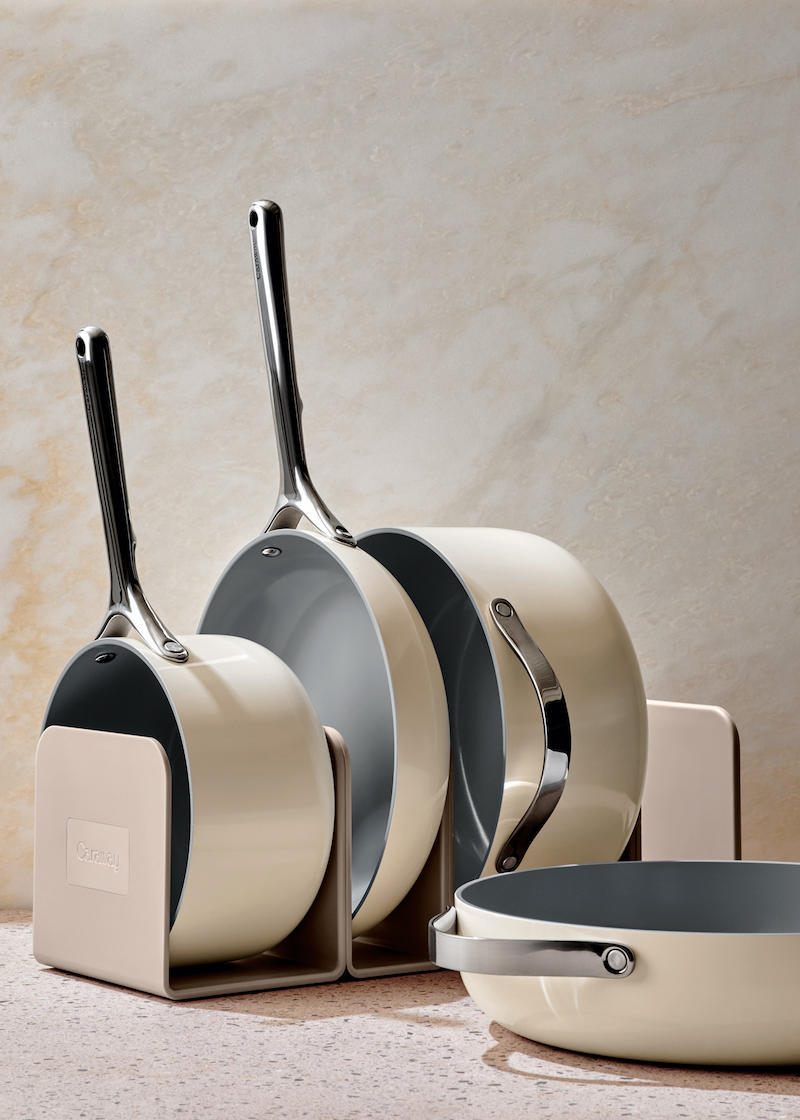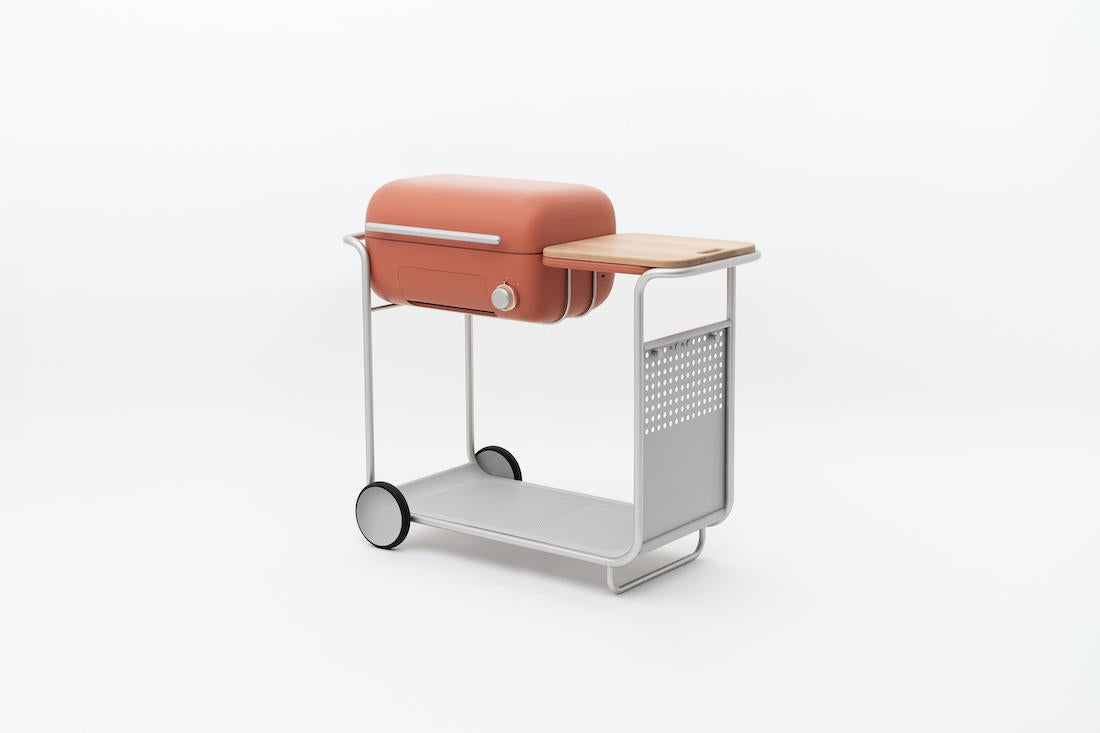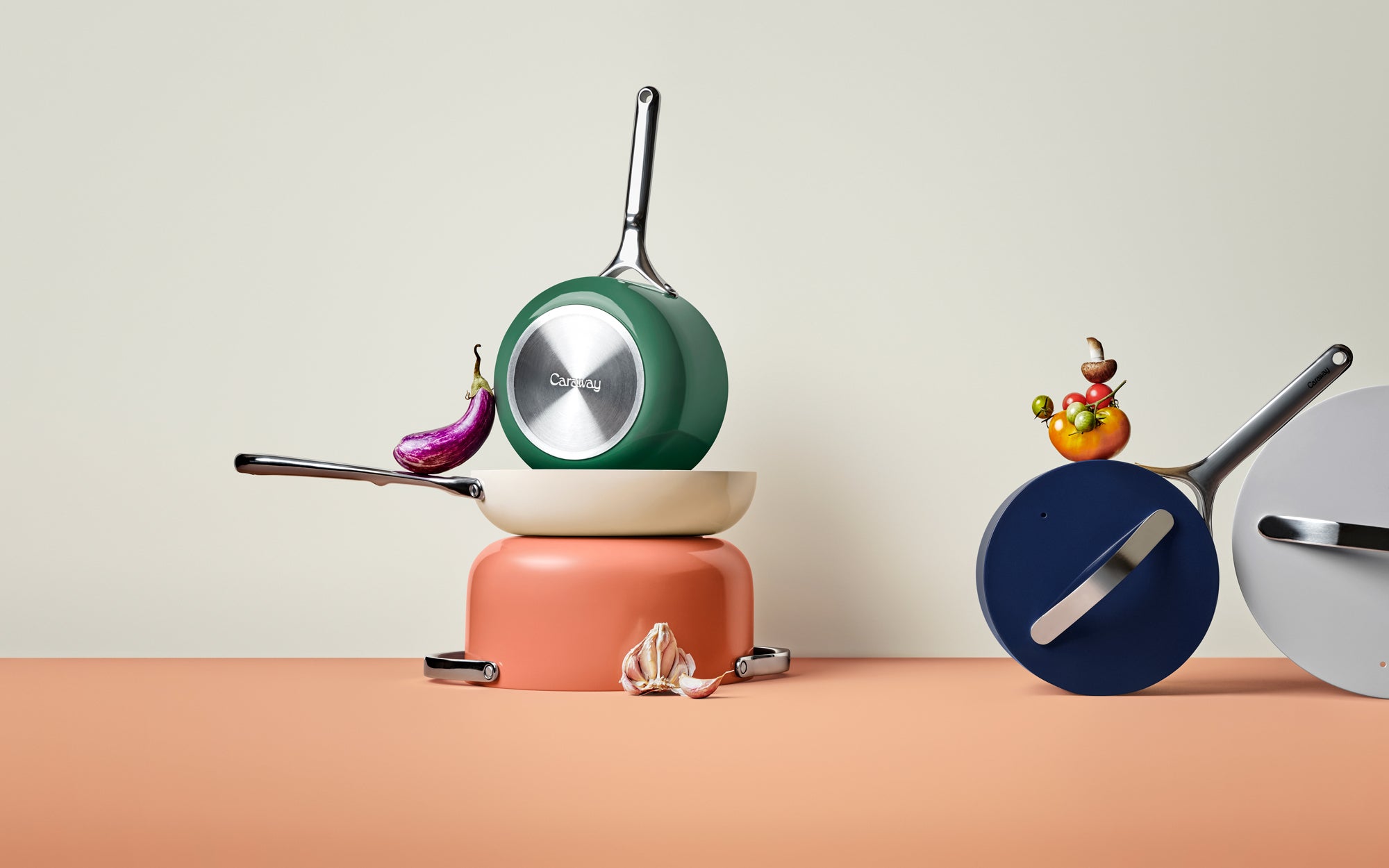Direct-to-consumer companies tend to have an origin story that goes something like this: “I spent all month looking for an affordable, high-quality widget, but there were just no options! That’s when I knew I had to quit my day job and spend months locked in the basement designing Widgetly.” The stories these companies often tell are of a heroic founder valiantly slashing out middlemen, cutting through sinister red tape, and single-handedly creating a perfectly crafted consumer product.
While there’s usually some truth to these tales, they obscure the existence of an entire industry that has sprung up in the past decade—everything from marketing agencies and design studios to PR and law firms—to help direct-to-consumer startups bring a product to market. It’s likely that the charismatic founder did come up with the idea for D2C thumbtacks, but just as likely that they worked with an industrial designer to craft the actual tack.

Bret Recor is one of those industrial designers. In fact, he’s one of the best. His studio, Box Clever, is behind the design of several D2C hits, including the ubiquitous luggage brand Away. In the home world, Recor’s studio designed cookware breakout star Caraway, as well as the Spark smart grill and the Nebia spa shower.
Fitting for a designer who works across multiple categories, Recor has worked in a variety of industries, designing everything from timepieces to helicopters. After a stint with Yves Behar’s Fuseproject, he and a colleague opened up their own studio in 2012, inspired by the wave of products launching on Kickstarter and other crowdfunding sites. “We looked at that and said, ‘This is amazing that people are throwing money at this, but the people who have these ideas have no experience bringing product to market. I have 10-plus years experience doing it. So maybe I can help,’” says Recor.
Business of Home spoke with Recor about what makes a great direct-to-consumer product, how the business side of the industry works, and the next wave in D2C home goods.
Not to get too into the weeds right away, but I’m curious how your business model works. How do D2C product designers make money?
It’s evolved. When we started out, we used a model used by other studios. We would say, “Here’s the cost for us to do the project—we can take some of our margin and invest it in the company we’re designing for.” That’s pretty common.
So you’re taking a lower fee upfront, and making up the difference with a slice of equity in the company you’re designing for?
We’re basically investing pre-seed. It’s a good arrangement because we can actually help the founders create a more valuable proposition to raise money with. Maybe they have renderings—well, we can help make a model or a prototype that they can really show when they’re pitching investors. They’ll get better terms because they’re more fully on their way.
You said you were changing your model?
We do the equity play still, but now I’m creating a fund so that I can separate the investments from the services. Basically, it allows outside investors to cover the equity side so that Box Clever can run with a full fee, and outside partners can take part in early-stage investments in these companies through us.
Do you also earn royalties on the products you design?
Royalties are more common in the world of furniture, but it does play out with startups. When they have to run lean, we can help by offsetting the fee with a royalty play. The upside is much higher, and the return is faster. We get the return when they get to market, so everyone marches a little more quickly.
It’s a harder thing to do a royalty arrangement with a young company. [Brands like] Knoll and Herman Miller—they’ve been around for a long time! They know how to sell, they know their projections. Whereas someone who doesn’t really know, it’s a big risk for us. They may not even make it to market, and then what do we do?

It’s interesting, a lot of what you’re talking about is stuff that a VC would have to think about. I wonder how that affects the design process. You’re really involved with these companies financially, not just working as a gun for hire.
We get our hands in a bit of everything once we engage. We’ve actually changed the way we talk about our engagements—they’re more partnerships than they are client/vendor [relationships]. It works better for everyone, and we offer more. We always overdeliver on the design process, but we’re [also] going to provide more of our network, assistance and advisory capacity. We’ll introduce them to potential investment partners, engineering partners, and some of our connections for helping to promote the product.
When you started to answer that question, you were laughing a little—what was that about?
It gets to a point where we want to help so much that we become part of the organization. Sometimes people look at it like, “I just want you to do the design.” And there are instances where we ask a question and people are like, “Why do you want to know that?” But if we understand product strategy and why you’re rolling this out, it makes everything better.
You’re really in the mix.
It plays out more like a true partner relationship—that’s one of the things we love about it. But it’s hard, because we’re coaching a lot.
What makes for a great direct-to-consumer product for the home?
Something we’ve been working on a lot recently is how a product works when you’re not using it. Most products, especially in the kitchen, you’ll use it, you’ll clean it, and you’ll put it away. And [several] hours later, you may use it again. It’s 95 percent passive, 5 percent in use.
We try to balance: Where is it when it’s not in use? What is the experience like in your life in your home, in your space? We did that with Caraway, where the storage system for the cookware is part of the design. Right now, we’re working with Fully, a division of Knoll that does home office [products]. We’re working on how to make things integrate into your home so it’s not like, “You want to work out? You have to have a Peloton in the middle of your living room.”
Maybe more broadly, what makes for a great direct-to-consumer company?
The value proposition has changed today. Remove the middleman, have direct engagement with the consumer—that was and is the model. There’s nothing special about it. You put anything into that model and then you figure out what it means for that category. Away saw the staleness of the travel industry and luggage industry—all these department store brands that were padded by all those middlemen.
But Away also saw a way to engage directly with consumers so you not only gave them a value proposition with the product itself, but you have this longstanding trust and relationship—you establish a bond. So that when you buy a suitcase again, you’re going to go to them. When someone asks, “Where should I buy a suitcase?” You say, “You have to buy it from them, they’re amazing.” There are all these stories of people who say, “I had an Away suitcase, I had a problem with it in Tokyo, and they sent a new suitcase to my hotel, no questions asked.”
If you had a Samsonite suitcase and it broke, you’d have to contact their service department, ship it to them, and then they’d repair it and ship it back. Well, that’s not satisfying the need for the customer. That’s where everyone is going now. The big brands that have been slow to come to direct-to-consumer or slow to build out e-comm in a more engaging way, they’re all scrambling now. Because now you have to have a way to engage directly with the customer.

You’re saying, basically, that you have to do more than have a good product and a good brand now?
Every person that has an idea is like, “I’m going to make a direct-to-consumer brand, I’m going to promote it on Facebook, Instagram, Twitter.” There’s no secret. You build it, you brand it, you put together some smart campaign with great photography, and you’re going to get sales. But there’s a bit of this plateau that happened. In the D2C world, to get over $100 million—that’s the threshold. You can go pretty far with a brand play and a decent product. But when it’s not fully integrated and you can’t extend it beyond one thing, it’ll quickly fade, because someone else will do it. And they’ll do it better and then they’ll build their system out. So one of the questions I ask a lot in my first meeting with new partners is: “What’s the vision beyond this one thing?”
What ultimately dooms a D2C company that doesn’t get it right?
It’s a blend of things, but the customer-acquisition cost just kills the business. It kills your margin. When Casper went public, their filing revealed their customer-acquisition cost [per sale] was about $100 more than they make off the mattress.
A lot of the time, when a new D2C product debuts, the brand story implies that the founder more or less did everything. Is it ever awkward to deal with who gets credit for what?
The thing I always go back to is: I want to be very truthful and genuine about what we do. It’s a tough challenge because the celebrity takes over and [founders] can start to think, “I’m a startup founder and it was my idea.” And, it’s like, it was! We don’t try to take that away. We try to help tell the story as truthfully as possible and really help them talk about how we helped with their business mission.

I have to admit, I’ve probably taken too many of those founder stories at face value.
If you went and did an audit of all the D2Cs, you’d quickly find how many [had help]—not just with the product but with the brand and everything. They’re hiring an agency or a freelancer to help them do it and then they’re not talking about who did it.
I think it’s partially because [founders] think that the design story is part of the business. And I think that is true. But especially with us now—before, when we weren’t as well-known there was a little more risk, but now that we’ve had the impact we’ve had with different companies, we’re almost like an asset now. I try to explain that people aren’t going to look at you and say, “Oh, you didn’t design it yourself, so I’m not buying it!” To them, it doesn’t matter, as long as it’s good quality and you guys are owning up to the mission.
One of the things I bump into a lot in the D2C world for home products is that these companies often want interior designers as customers, but their business model has no extra margin in it, so they can’t offer a trade discount.
The margins thing is tricky. Away, up until last year, never did a sale. They did their first sale ever during COVID. I always ask them, “Is this the model going forward?” And they say they’re never going to do a sale, because their prices are already lean. And that’s the problem—you don’t have as much margin.
You can play the game: You make your prices higher and make everyone feel like they’re getting a deal, but it’s kind of a mess. That’s why a lot of the D2Cs don’t do it, because it’s more efficient to run lean. But Jordan [Nathan] at Caraway has to factor it in now that the brand is doing collaborations—they just did one with Crate & Barrel, and there will be others. So, when they do that, they actually have to increase the price of the product so that they don’t destroy the margins.
What’s the next big wave in D2C home products?
One thing I’m really excited about is circular [design]. It’s hard for furniture because you get attached to it, you collect it—it’s almost like a family member. What we might see in more utility products is a subscription model, where the end of life for the product is not waste, but that it goes back. I think that’s probably going to shift in a lot of things.
I have a few products that I’m working on now where the model is based around a monthly fee: You get your product; if anything’s wrong, you get your product repaired; and if something new comes out, you get offered the upgrade. It’s almost like how phones have changed—now you’re buying it over time and it’s padded into your contract.
I think that’s coming. The problem is, to date, they’re not done properly—a lot of them are too expensive. The model isn’t quite there yet, but I think that’s where the advantage is going to go. I bring it up with all the companies I work with, because I don’t think the circular model is if it’s coming, it’s when it’s coming. It may be mandatory [eventually]. I hope it’s mandatory. You hold people who produce product accountable for what they produce, versus, “Hey, we sold it to you, good luck getting rid of it.”
Homepage photo: Caraway cookware | Courtesy of Box Clever





























